Great question!
I ran the following code as you had it, and it looked like an isometric view of a white cube.
1: size(300,300,P3D);
2: camera(30, 30, 30, 0, 0, 0, 1, 1, 0);
3: ortho(-100, 100, -100, 100, -500, 500);
4: PGraphics3D p3d = (PGraphics3D)g;
5: p3d.camera.set(1, 0, -0.433f, 0, 0, 1, 0.25f, 0, 0, 0, 0, 0, 0, 0, 0, 1);
6: box(20);
Here's what's happening:
- Line 2: sets both the camera and modelview matrices
- Line 3: sets the projection matrix
- Line 4: sets the camera matrix only, but this actually did nothing here. (read on)
Transformations are only performed using the modelview and projection matrices. The camera matrix is merely a convenient separation of what the modelview is usually initialized to.
If you used the draw() function, the modelview matrix is actually initialized to the camera matrix before each time it is called. Since you didn't use the draw() function, your camera matrix was never updated with your oblique transform in your camera matrix.
How to create an Oblique Projection
As a disclaimer, you must truly understand how matrices are used to transform coordinates. Order is very important. This is a good resource for learning it:
http://glprogramming.com/red/chapter03.html
The quickest explanation I can give is that the modelview matrix turns object coordinates into relative eye coordinates, then the projection matrix takes those eye coordinates and turns them in to screen coordinates. So you want to apply the oblique projection before the transformation into screen coordinates.
Here's a runnable example for creating a cabinet projection that displays some cubes:
void setup()
{
strokeWeight(2);
smooth();
noLoop();
size(600,600,P3D);
oblique(radians(60),0.5);
}
void draw()
{
background(100);
// size of the box
float w = 100;
// draw box in the middle
translate(width/2,height/2);
fill(random(255),random(255),random(255),100);
box(w);
// draw box behind
translate(0,0,-w*4);
fill(random(255),random(255),random(255),100);
box(w);
// draw box in front
translate(0,0,w*8);
fill(random(255),random(255),random(255),100);
box(w);
}
void oblique(float angle, float zscale)
{
PGraphics3D p3d = (PGraphics3D)g;
// set orthographic projection
ortho(-width/2,width/2,-height/2,height/2,-5000,5000);
// get camera's z translation
// ... so we can transform from the original z=0
float z = p3d.camera.m23;
// apply z translation
p3d.projection.translate(0,0,z);
// apply oblique projection
p3d.projection.apply(
1,0,-zscale*cos(angle),0,
0,1,zscale*sin(angle),0,
0,0,1,0,
0,0,0,1);
// remove z translation
p3d.projection.translate(0,0,-z);
}

